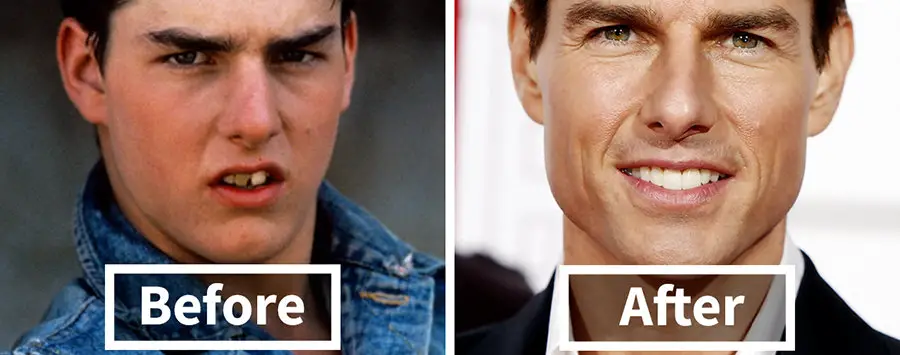
You probably heard of the wonders that mewing can do for your facial bone structure. Mewing is also good for the teeth because it prevents malocclusions.
Mewing cannot straighten crooked teeth, especially if your teeth are very crooked. While mewing can help prevent crowded and misaligned teeth while you are young, mewing cannot correct crooked teeth.
Abnormalities in the positioning of the teeth and crooked teeth are called malocclusions. They can have disastrous results on your facial aesthetics.
What You Need to Know About Mewing
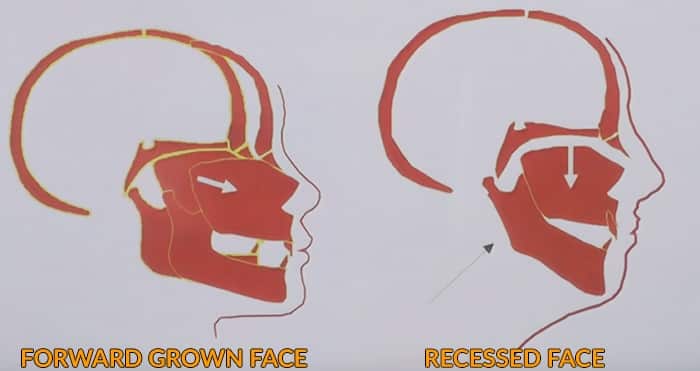
Mewing is essentially normal tongue and mouth posture. However, many people have improper tongue and mouth posture due to our sedentary lifestyles, lack of hard foods, mouth breathing, etc.
While it may seem strange that proper tongue and mouth posture can help you, consider that cavemen were less likely to have weak jaws and crooked teeth. It is because they had normal tongue posture and chewed more because they mostly had a diet of hard foods. Cavemen skulls had spacious jaws and no malocclusion.
Mewing is best known for how it can guide your facial bones to grow a certain way. It encourages your facial bones to develop more prominent cheekbones, get a chiseled jawline, get cheek hollows, etc.
Other than aesthetically pleasing benefits, mewing can offer health benefits, too. For instance, mewing can help you stop being a mouth breather.

A study showed that mouth breathing children are more likely to snore and have sleep apnea (Izu et al., 2010). By correcting your tongue posture and breathing from your nose, you could stop snoring and treat sleep apnea.
Mewing can help strengthen your jaw bone and muscles, correct your tongue posture, expand your palate, and more. Therefore, mewing could also help people with sinusitis, temporomandibular joint dysfunction (TMD), speech disorders, and breathing and swallowing problems.
While mewing can offer lots of aesthetic and health benefits, it cannot straighten your teeth. Mewing cannot correct crooked teeth, especially if you need to get braces or retainers. Therefore, mewing cannot serve as a replacement to braces or retainers.
Are There Ways Mewing Can Help My Teeth?
While mewing cannot correct crooked teeth, that does not mean it cannot help you, especially if you are young. Mewing has benefits that go beyond just the teeth.
As mentioned earlier, our current lifestyles often make our teeth crooked.
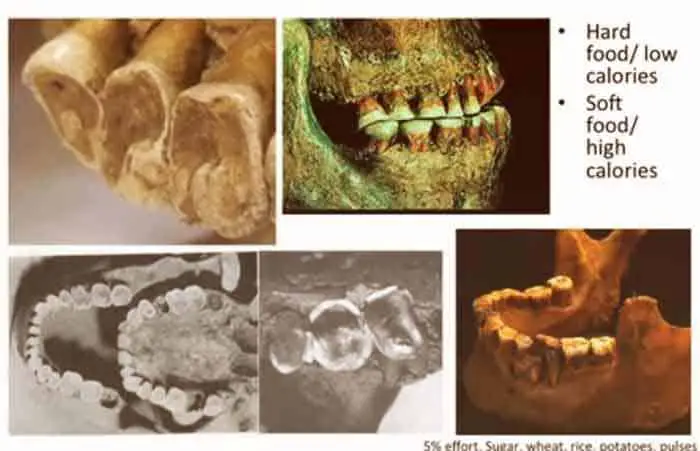
Note how worn down the teeth of ancient humans were. Cavemen used their teeth and jaws to the maximum capacity. They used their mouths to eat and tear hard food. Our current diets are mostly composed of soft processed foods like cooked vegetables, yogurt, cookies, pizza, soft bread, etc.
However, you can’t merely go back to the same diet that the cavemen had because it would be difficult in our society. Luckily, that is where mewing comes in. Mewing makes you correct your tongue and mouth posture while engaging the muscles under your chin. It helps you strengthen your jaw and encourage proper teeth alignment, especially when you combine it with gum chewing.
Plus, mewing helps expand your palate. While it works with anyone, no matter what age, mewing results are more evident in younger people because their bones are more malleable.
People who are 21-25 years old can see apparent results from mewing after 1-2 years. While mewing gets much harder after childhood, it has still worked for plenty of adults that were done with puberty. Click here to see more mewing before/after photos. Click here to visit our ultimate mewing guide.
By expanding your palate, you decrease your chances of getting crowded teeth. Teeth crowding can make your teeth crooked because there is not enough room in your mouth. Therefore, you can avoid that with mewing.

Mewing and Teeth
If you do not mew properly, there is a chance that it could make your teeth worse. While mewing itself is simple, you need to make sure you are doing it the right way. For instance, let us say that the tip of your tongue is touching your teeth, and you put more pressure there. That’s not the right way to mew. The force can make your teeth jut forward.
Some people also state that their overbites became worse from mewing. Again, that is because they might be putting excessive pressure on the tip of their tongue and pushing outward. You need to focus on using gentle pressure with a little more focus on the back third of your tongue.
Luckily, you can avoid that by simply mewing the right way. You can also tweak the way you do it if you are wearing braces or retainers.
If you want to learn how to mew correctly, check out our guide.
Mewing With Braces and Retainers
You can mew with braces and retainers to enhance your facial appearance, prevent teeth crowding, and get health benefits. However, it depends on what kind of braces or retainers you have. To find out, do a simple test. Simply try to mew – if you can rest your tongue on your palate without touching with your braces/retainers and teeth, you can mew.
If you have traditional metal braces, ceramic braces, or Invisalign, you should be able to mew with no problem. You just need to make sure your tongue is not touching your teeth. However, if you have lingual braces, you may not be able to mew. Since the brackets of lingual braces are behind your teeth, there may not be enough room for your tongue to rest on your palate without touching the braces.
To get an in-depth look at how to mew with retainers, click here.
Keep in mind that you should not focus on putting too much sideways pressure on your dental arch. Braces and retainers keep your palate from expanding.
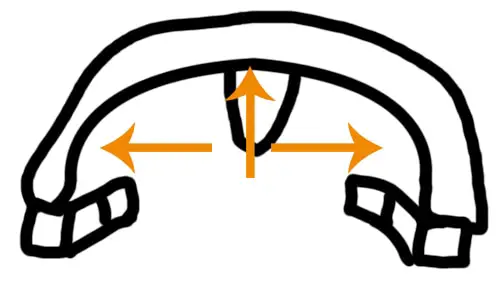
You want to focus on putting pressure upward instead.
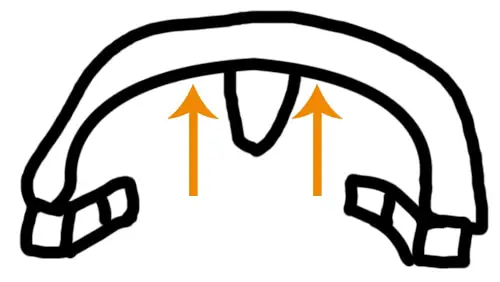
Remember that it would be best to consult your dentist or orthodontist before mewing. They can tell you if it would be a good idea to mew based on your specific case.
Some people can mew if their braces or retainers are pushing their teeth outward. Therefore, mewing properly should not interfere with their progress.
However, if your retainers or braces are pulling your teeth inwards, then your orthodontist or dentist may discourage you from mewing. That is because the force of your tongue is counteracting the braces, which is counterproductive to your progress.
If your braces are pulling your teeth inwards, you can try to start mewing once you remove them. Remember to check out our Mewing With Retainers guide to make sure you’re doing it safely.
Palatal Expansion Without Mewing
Some people may find it hard or impossible to mew, which may be because they have a small palate. That is because they will not be able to rest their tongue on their palate properly due to a lack of space. This can be an issue if you are looking for a way to prevent teeth crowding and crooked teeth.

As mentioned earlier, mewing can expand your palate, which can help prevent teeth crowding. However, if the tongue cannot comfortably rest on the small palate, there are other ways you can expand it.
For instance, you can get a Maxillary Skeletal Expander or MSE for short. It is a device used to expand the palate. Late adolescents successfully split their midpalatal suture with MSE (Cantarella et al., 2017).
MSE is usually offered to people who are 18 years old and older. It is a non-surgical procedure. However, people who are 25-30 years old and older may have to get a surgically assisted palatal expansion.
Once your palate is expanded using devices like MSE, you should be able to mew comfortably. You will also notice that it is easier to breathe, and you snore less because your nasal airways have also expanded.

